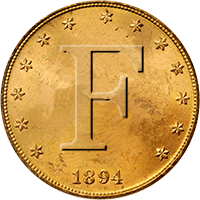Find's Treasure Forums
Welcome to Find's Treasure Forums, Guests!
You are viewing this forums as a guest which limits you to read only status.
Only registered members may post stories, questions, classifieds, reply to other posts, contact other members using built in messaging and use many other features found on these forums.
Why not register and join us today? It's free! (We don't share your email addresses with anyone.) We keep email addresses of our users to protect them and others from bad people posting things they shouldn't.
Click here to register!
Need Support Help?
Cannot log in?, click here to have new password emailed to you
You are using an out of date browser. It may not display this or other websites correctly.
You should upgrade or use an alternative browser.
You should upgrade or use an alternative browser.
Pros & cons of running the Deus in 4kHz?
- Thread starter D&P-OR
- Start date
It all depends on what you are searching for. You will lose the sensitivity to small low conductors. But silver should light up. Personally when I'm hunting for deeeeep silver I use it. Any other time I usually find myself in eight or twelve. And 4 kHz doesn't work well with fast recovery.
CZconnoisseur
Active member
4 khz will do well with US coins except the nickel - you will have a greater chance of missing nickels especially if they are 6" deep or more. 4K is more susceptible to EMI at least where I live.
You can still find plenty of small low conductors using 4K but proper and frequent GB is key!!! I've found spent .22cal shell casings up to several inches deep with 4k. But the projectiles light up sooooo much better with 12 and 18K. Like goodmore said...depends on what you are hunting! Higher frequecies will false on bottlecaps easier as opposed to 4K.
You can still find plenty of small low conductors using 4K but proper and frequent GB is key!!! I've found spent .22cal shell casings up to several inches deep with 4k. But the projectiles light up sooooo much better with 12 and 18K. Like goodmore said...depends on what you are hunting! Higher frequecies will false on bottlecaps easier as opposed to 4K.
Thanks guys----I'll be doing some more testing on settings with 4 kHz.-----Deep silver in moderate to heavier mineralized ground is the intended targets.-----I've been running mainly in 8 kHz with a "next door" b.c. check program----but I am finding I get cleaner hits (audio wise) in 12 kHz in the ground(s) I'm hunting, probably due to mineralization.------Don't know yet if 4 will work for me or not---I'll find out.
Low-Boy/LCPM
Active member
I don't think for park hunting you can go wrong witht the freq of 8 and use more TX power and lower reactvity...nothing is perfect
NiagracountyNY
New member
If your finding 14 is hitting better,have you tried going up to 18?I find 18 works well on the small silver(dimes) and small items.
4KHz will fail you on small silver. I found this out when running at 12KHz and switching frequencies on a find a couple weeks ago in a field hunt. Pictured is the small sterling silver item next to a dime. I barely got a signal at 4KHz. Even 8KHz seemed to struggle with it but was much better.
12KHz rung out nicely. The area is full of coke and nails so that may have affected the capabilities of 4KHz. All are comparable programs, just different frequencies. The reason I was running 12KHz is because I was hopeful of finding a shield or V nickel as well as silver. The area is old and turns up 1880-1890 Indians on an average.
12KHz rung out nicely. The area is full of coke and nails so that may have affected the capabilities of 4KHz. All are comparable programs, just different frequencies. The reason I was running 12KHz is because I was hopeful of finding a shield or V nickel as well as silver. The area is old and turns up 1880-1890 Indians on an average.
sprchng
Well-known member
4k certainly compresses the low conductor range but is supposed to be deeper. My dirt sees a foot of rain on a wet year so even backhoes don't go very deep. Depth is not the key here so I run mostly in 18 to expand that low conductor range as much as possible , maybe too much. I have found but one gold ring with the Deus here but 14 with the etrac and CTX combined. Not a fair comparison because I have 50 times more hours on them than the XP. The gold rings I have found run from 37 to 80 on the Deus with the freq. @18. The Deus ring was a 44. I think I'll give 12 k some time to save the sensitivity on low conductors but compress the range a bit.
4k 's best value for me is as an identifier of caps
4k 's best value for me is as an identifier of caps
beepsilver
Member
ncwayne said:If 4 kHz misses nickels, won't it also miss gold? Or am I wrong about this? I've come to believe that if the nickels are singing out, so, too, will the gold.
I'd say you may be right at times depending on the situation--the problem is, there are just too many variables to consider beyond conductivity. Mineralization, target depth, shape and size among other things will dictate how each frequency identifies an object--that's why I love having adjacent programs to help with identification.
woodchiphustler
New member
4 Khz knocks out large iron.


